The Indiana University School of Medicine Proteomics Core offers several services for investigators who are interested in protein-based analysis using mass-spectrometry (MS). Proteomics core researchers are able to identify proteins in a biological substance, measure the quantity of proteins and look at chemical modifications that occur on the proteins. Proteomics research can help investigators discover new protein markers and study novel targets for drug discovery. 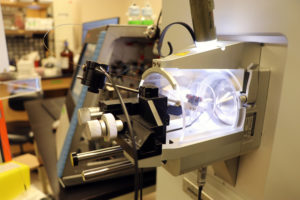
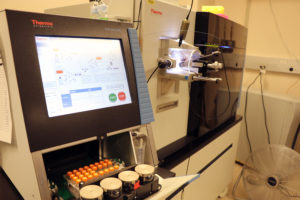 “One of the things I’ve always been interested in is how molecules interact with each other to make cells do different things and proteomics is a really good tool to do that,” said Amber Mosley, PhD, who is the director of the Proteomics Core. “You can try to figure out what molecules are interacting with what other ones, their relative abundance and what changes occur. We can measure all of that with MS using different approaches. One of our most recent service offerings, thermal proteome profiling, can be used to look at changes in protein stability in the presence of different compounds or even genetic changes.”
“One of the things I’ve always been interested in is how molecules interact with each other to make cells do different things and proteomics is a really good tool to do that,” said Amber Mosley, PhD, who is the director of the Proteomics Core. “You can try to figure out what molecules are interacting with what other ones, their relative abundance and what changes occur. We can measure all of that with MS using different approaches. One of our most recent service offerings, thermal proteome profiling, can be used to look at changes in protein stability in the presence of different compounds or even genetic changes.”
Proteomics core researchers can do sample preparation, mass spectrometry analysis and data analysis (or any combination of the three) for investigators who request their services. Mosley says one of the most important tasks they do in protein analysis is determine protein sequence.
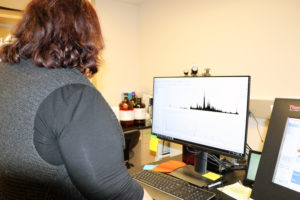
“We get protein sequence by looking at the way that a small piece of a protein (a peptide) breaks into smaller pieces in a mass spectrometer,” said Mosley. “The small pieces it’ll break into can be matched up to look for differences in the weight. That’s how we can tell what amino acids the proteins are made out of.”

Mosley’s team can provide data back with any level of detail, but she says most investigators are interested in the identification of proteins in the sample, post-translational modifications and the abundance.
“With the abundance measurements, we can give statistical analysis if we have enough biological replicates,” said Mosley. “We can do some other types of analysis, as well as look at biological pathways or to look at which samples grouped together, if we’re looking at patient samples, that look most similar to each other. There are a lot of options.”
The Proteomics Core currently has three high-resolution mass spectrometers and will be getting two new instruments in the near future. One of them will be an update to an existing instrument, but one will be an addition to their inventory, which will allow them to have increased capacity, with four mass spectrometers.
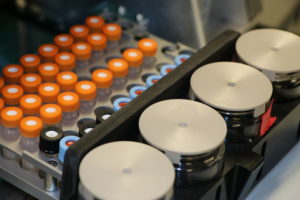
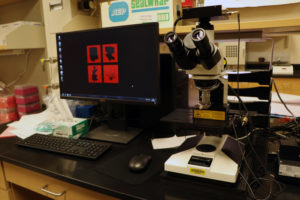
“We also had some other infrastructure changes that will help us do more comprehensive proteome analysis,” said Mosley. “We also have some new data analysis tools that we’re developing now with the core staff to offer some new services. Those should be coming out and will be updated on our webpage when we’re ready for that.”
The Proteomics Core serves investigators from the Indiana Clinical and Translational Sciences Institute, IU School of Medicine, IU Simon Cancer Center, IU Center for Diabetes and Metabolic Diseases, Stark Neuroscience Research Institute, the Indiana Center for Musculoskeletal Health, and the Indiana Biosciences Research Institute.
